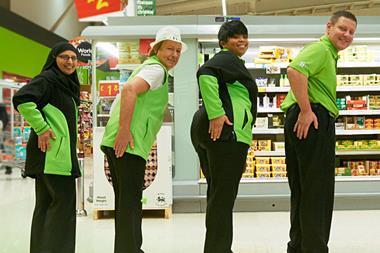from Peter Sherratt, Salt Manufacturers’ Association
Sir; As the Food Standards Agency launches its new anti-salt campaign (The Grocer, October 1, p6), we are concerned that the health of many thousands of people could be at risk from following government advice to cut our salt intake.
As we already mentioned in your news story, we believe the multi-million-pound campaign funding would be better spent on a free nationwide screening programme to identify those at risk from a range of health problems, including high blood pressure.
But we would also add that we should not be experimenting with the public’s health. No one has yet proved that cutting salt produces any long-term health benefits for the general population, yet we do know that encouraging people to exercise and eat healthily has a marked effect. The government should surely be investing our money in solutions that are known to work and finding those who need proper medical treatment.
According to a series of scientific experts around the world, blanket advice to cut salt consumption without first seeking medical advice could be dangerous for some large population groups. Those who exercise and lose vital sodium through sweat are at risk from hyponatraemia - abnormally low concentration of sodium in the blood - which can result in coma or even death.
Professor Ron Maughan of Loughborough University shows that professional footballers can lose up to 20 grams of salt in a typical day’s training. This comes at a time when the Food Standards Agency is saying that our daily intake should not exceed six grams.
There is a growing weight of opinion that a low-salt diet could also be dangerous for older people. Leading British physiologist Professor Bill Keatinge warns that elderly people need to maintain their intake of both water and salt during heatwaves, when deaths typically increase by 50%.
Likewise, pregnant women need to be wary of cutting their salt consumption as this could cause problems with blood volume in the unborn child, which in turn can cause a rise in the mother’s own blood pressure.
Sir; As the Food Standards Agency launches its new anti-salt campaign (The Grocer, October 1, p6), we are concerned that the health of many thousands of people could be at risk from following government advice to cut our salt intake.
As we already mentioned in your news story, we believe the multi-million-pound campaign funding would be better spent on a free nationwide screening programme to identify those at risk from a range of health problems, including high blood pressure.
But we would also add that we should not be experimenting with the public’s health. No one has yet proved that cutting salt produces any long-term health benefits for the general population, yet we do know that encouraging people to exercise and eat healthily has a marked effect. The government should surely be investing our money in solutions that are known to work and finding those who need proper medical treatment.
According to a series of scientific experts around the world, blanket advice to cut salt consumption without first seeking medical advice could be dangerous for some large population groups. Those who exercise and lose vital sodium through sweat are at risk from hyponatraemia - abnormally low concentration of sodium in the blood - which can result in coma or even death.
Professor Ron Maughan of Loughborough University shows that professional footballers can lose up to 20 grams of salt in a typical day’s training. This comes at a time when the Food Standards Agency is saying that our daily intake should not exceed six grams.
There is a growing weight of opinion that a low-salt diet could also be dangerous for older people. Leading British physiologist Professor Bill Keatinge warns that elderly people need to maintain their intake of both water and salt during heatwaves, when deaths typically increase by 50%.
Likewise, pregnant women need to be wary of cutting their salt consumption as this could cause problems with blood volume in the unborn child, which in turn can cause a rise in the mother’s own blood pressure.















No comments yet